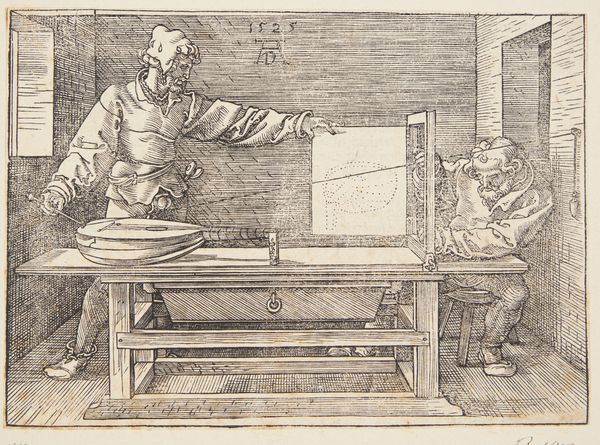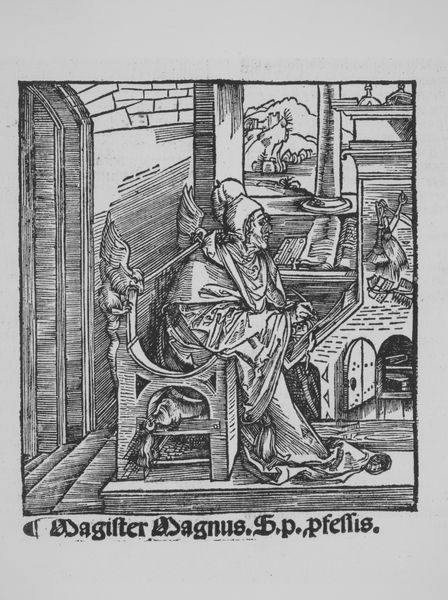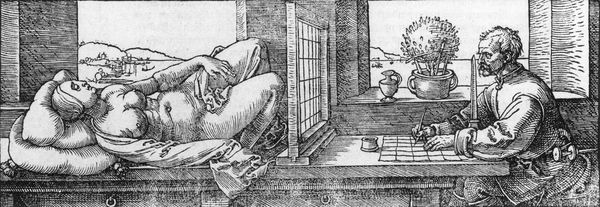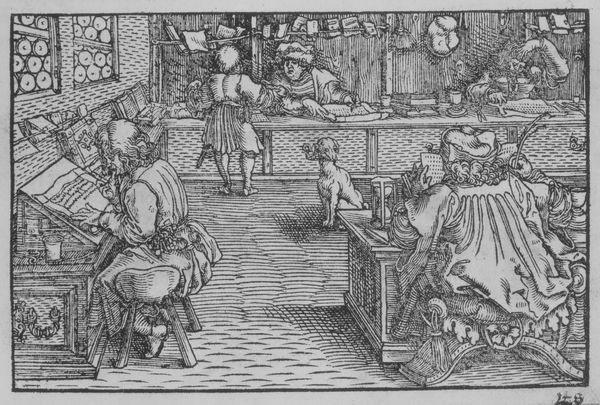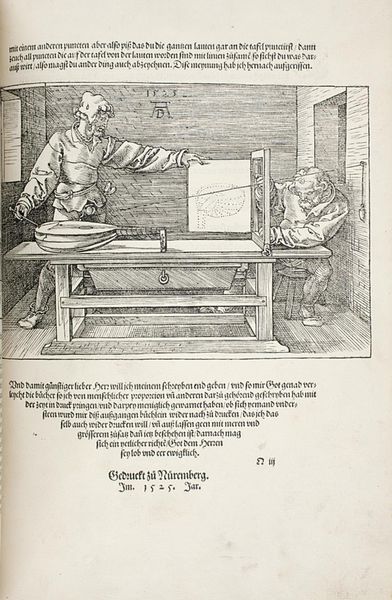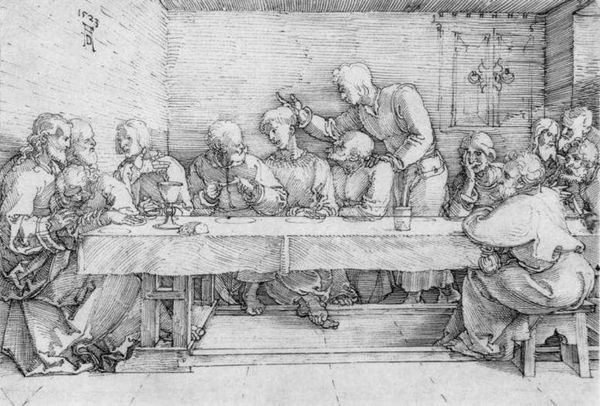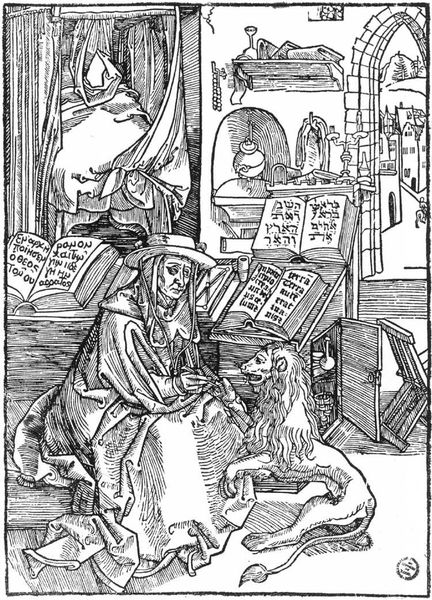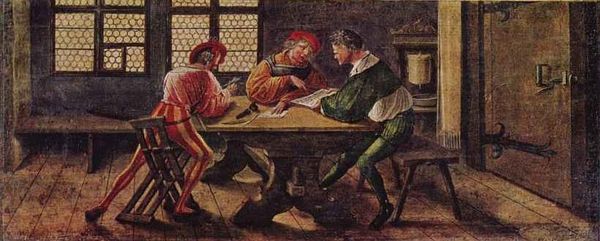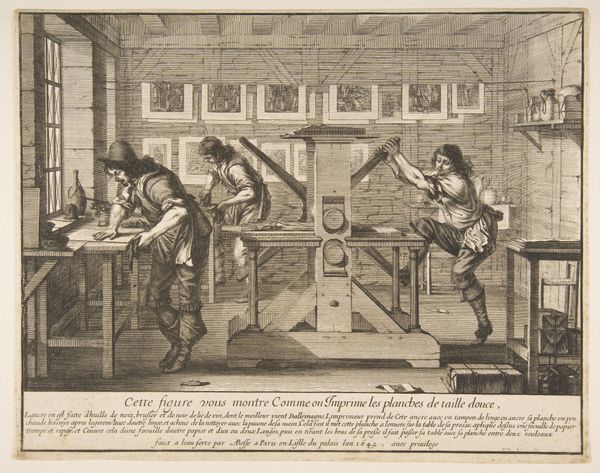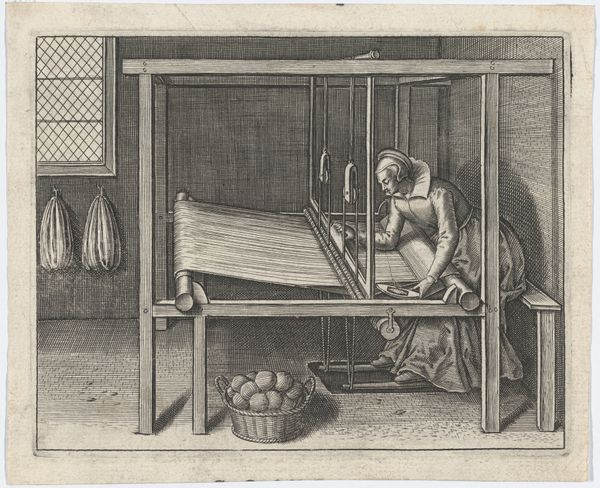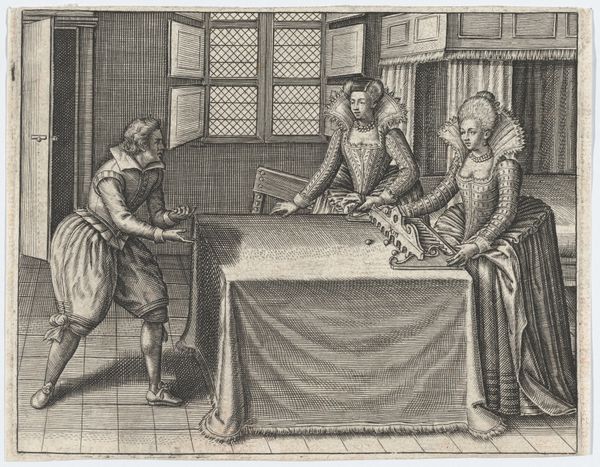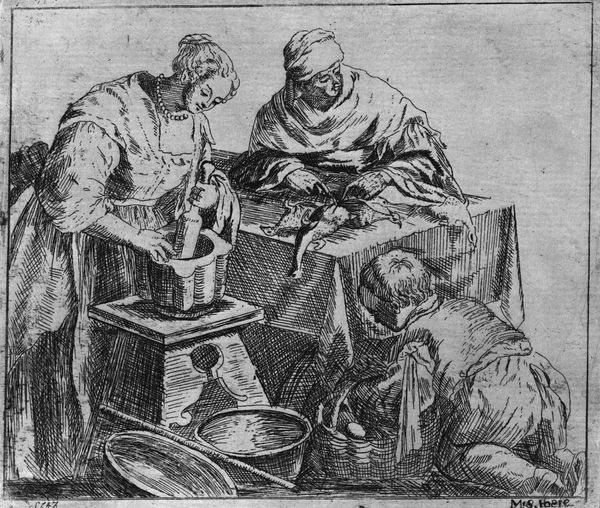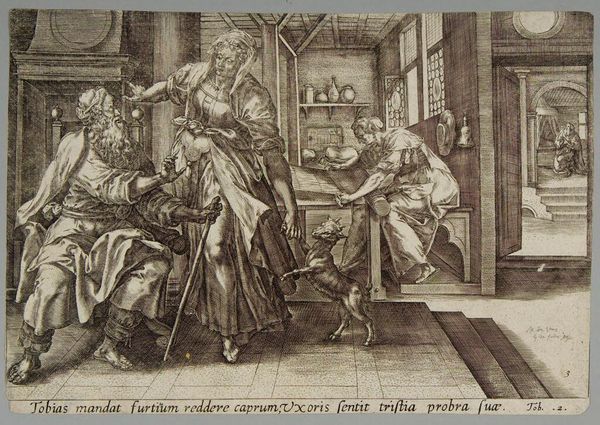
drawing, print, woodcut, engraving
#
drawing
# print
#
pen illustration
#
furniture
#
perspective
#
woodcut
#
northern-renaissance
#
engraving
Copyright: Public domain
Albrecht Dürer crafted this image, "Man Drawing a Lute," using woodcut, a medium that allows for intricate detail and symbolic expression. The image depicts a man using a mechanical drawing device to render a lute. Here, the lute, a symbol of harmony and divine order since antiquity, is reduced to a series of plotted points, a stark contrast that reveals a deeper tension. Consider how the lute, an instrument once revered in classical antiquity and Renaissance courts, now exists merely as a subject to be mapped and measured. This act recalls the alchemical transformations of Hermes Trismegistus, where objects are broken down into their constituent parts. We observe echoes of these symbols in later works, even in the fragmented forms of Cubist paintings where familiar objects are dissected and reassembled, mirroring a similar quest for understanding. This scene, rich with intellectual and artistic tension, captures the zeitgeist, engaging the viewer on a deep, subconscious level. The cyclical journey of symbols—from the lute's embodiment of divine harmony to its fragmented representation—highlights their continuous re-emergence, evolution, and reinterpretation across different historical contexts.
Comments
No comments
Be the first to comment and join the conversation on the ultimate creative platform.
